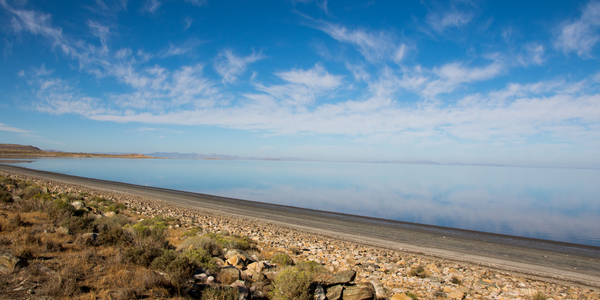The winds are whirling the toxic metal-laden dust with an increasing portion of the lake bed drying up. This is putting the environment and lives of 2.5 million residents living along the margins of Salt Lake City at risk, according to Kevin Perry, a University of Utah scientist researching the Great Salt Lake dust.
The lake's protective crust is eroding and is projected to rise to 24 to 25%, a worsening impact as compared to the lakebed’s 9% dust source in 2018.
So, what is causing the rapid exposure of the lakebed? About 75% of the current volume drop is attributed to anthropogenic activities, including the intensive industrial activities in the region (the lake's volume has decreased by about 67% since the area was first populated). The remaining factors are calculated to be brought on by climate change, notably the ongoing drought that has been and is affecting the western US.
The samples collected from the dust traps by the USGS researchers have shown arsenic to be more prevalent in samples from wealthier neighborhoods, probably as a result of its historical usage as a fertilizer on farmlands. Meanwhile, the presence of nickel, thallium, and lead is prevalent in lower socioeconomic neighborhoods. Based on the findings, the researchers believe that neighboring polluters or building projects are the primary local sources of dust and harmful metals found in urban, varied communities. Additionally, it's also possible that dust entering the city picks up regional contaminants from adjacent mines, refineries, and pesticides from the Great Salt Lake and adjacent playas. Given that the highest concentrations of metals and dust are detected outside the suburbs of Salt Lake City, researchers are estimating that communities north of the city, including those in Syracuse, Ogden, and Bountiful, are most vulnerable.
Scientists are trying to determine the dangers and the levels that can be hazardous. Figuring out the potential danger that the toxic elements in the dust pose to people, the safe exposure levels, and the long-term effects on Utah locals. The fear remains that regardless of the findings, the hazard will only increase as lake levels decrease.

What makes the dust problem even more pressing for the most populous city of Utah is the existing concerns of air pollution issues. Salt Lake City was placed 20th for short-term particle pollution last year by the American Lung Association in 2021, and ninth out of 888 U.S. metro areas in an EPA risk screening related to the health risk from dangerous chemical releases in 2020. The wind-blown toxic dust will do no favors but only worsen the already detrimental air quality of the city.
So far, the EPA has set the screening criteria for metals in soil, but there are no concrete guidelines on the exposure levels to dangerous metals in the dust. Everything is still in the “testing” period.
Related blog:





